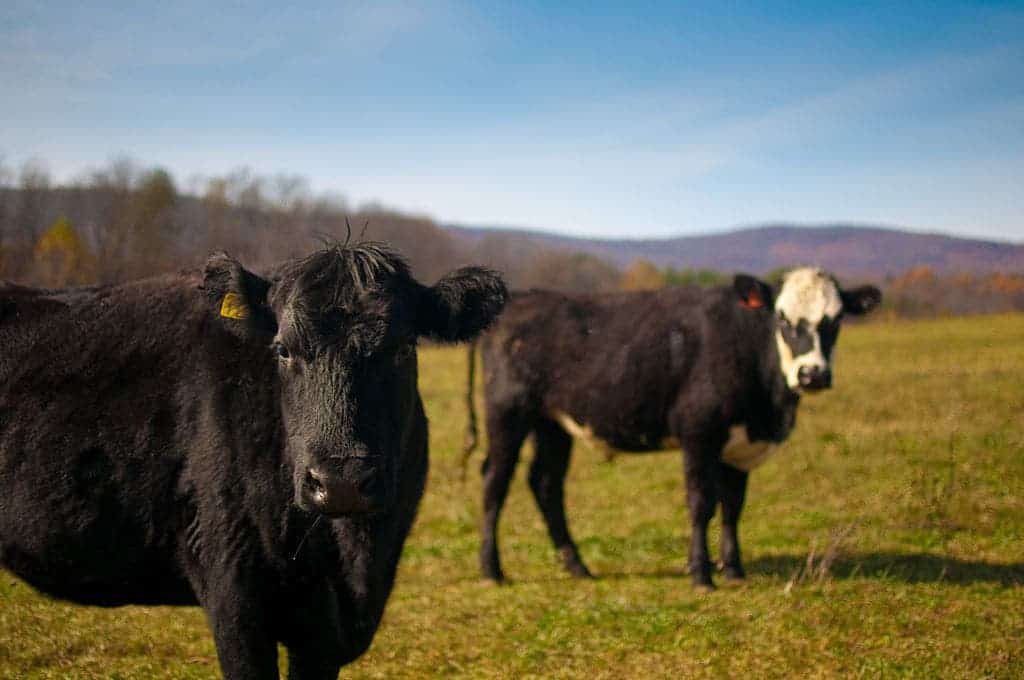Greenhouse gas emissions in US diets are down by 35%, in part thanks to a declining appetite for meat over the past few decades, a new study claims. While this far exceeds the suggested national limit to keep temperatures in line with the Paris Agreement, researchers believe this is a promising trend that could change overall food habits. But we need more.

Food systems are responsible for up to a third of global greenhouse gas emissions, which means that if we want to truly reduce our greenhouse gas emissions, we also have to look at what we eat. There are many opportunities to bring down emissions in the sector, including improvements in crop production, decreasing food waste, limiting land-use expansion, and shifting dietary habits.
Meat (and red meat in particular) is the biggest culprit when it comes to emissions. U.S. beef produces 22 kg of CO2 equivalent emissions per kg, though the estimates can very significantly (and can be much higher for other parts of the world) Even if you look at the emissions per calorie or per gram of protein, which are two commonly used metrics, beef and other red meats fare much worse than pretty much every other food.
So if you want to cut down the carbon from your diet, cutting down on beef, lamb, pork, and dairy would be a good place to start. A recent report by the EAT-Lancet Commission found that current global dietary patterns exceed the maximum emissions boundary to keep global warming below 2 degrees Celsius by 195% – the goal of the 2015 Paris Agreement. The authors concluded that significant dietary shifts were needed to meet the climate targets.
Using data from a dietary survey of US adults between 2003 and 2018 and doing a life cycle analysis on the reported foods, a group of researchers found that the diet-related greenhouse gas emissions of US citizens almost halved. Emissions felt from four kilograms of CO2 equivalent to 2.45 kg of CO2 equivalent over the study period.
This is largely explained by a 40% drop in daily beef consumption per person during the same study period, which accounted for about half of the dip in emissions. The data shows a gradual shift away from all animal-based foods, including beef, dairy, eggs, chicken, and pork – all of which US citizens consumed less of in 2018 vs 2003.
Dietary shifts
This shift away from meat in the US happened gradually but continuously, the study showed. The food-related carbon footprint of US consumers dropped by 127 grams each year during the study period. Despite this change, the number of calories that US citizens consumed didn’t change much, meaning that people weren’t eating less, they were just eating different things.
The researchers believe that this is because more people have switched from meat to plant-based proteins. In fact, in separate research, the US Department of Agriculture found that consumption of fats, oils, legumes, corn, and other less emission-intensive food has increased in recent years, which explains why calories remained stable
There were also some demographic differences in how people consume food. Black women had the smallest dietary footprint by far, 20% below the national average. On the opposite extreme, men had an emissions footprint 10% larger on average than women. Specifically, men between 35 and 49 had the largest dietary footprint overall.
“The sociological literature has shown that social norms and masculine identity are linked with meat consumption, including one study that found men who described themselves as more masculine consumed more meat and tended to exhibit justification strategies, such as having a “pro meat” attitude,” the researchers wrote.
The researchers warned the average US diet still exceeds two-fold the limits suggested by the EAT-Lancet report. However, they are optimistic that the changes seen over the last 15 years have laid the foundations for even further diet-related changes in the US, including less beef consumption and more plant-based foods.
The study was published in the Journal of Cleaner Production.


